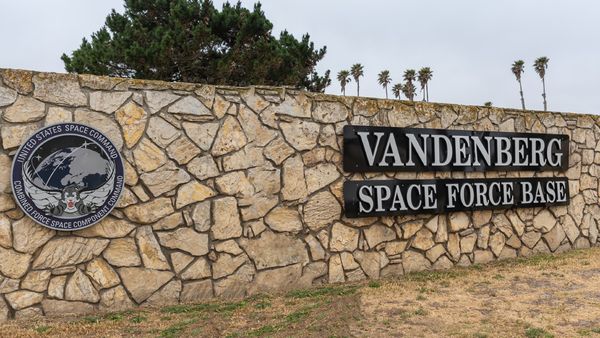The Supreme Court's June 2022 decision in West Virginia v. EPA will be remembered for its endorsement of the "major questions doctrine." The new doctrine, as would have been obvious to all participating justices, is designed to function as an exception to the Chevron doctrine, so named for Chevron U.S.A. Inc. v. Natural Resources Defense Council, Inc. (1984).
By contrast, this would not be apparent to the casual reader, since Chevron was never mentioned by Chief Justice Roberts in his opinion for the Court, or in the enthusiastic concurrence by Justice Gorsuch. It was mentioned in passing in Justice Kagan's dissent, but not to suggest that the Court should have reviewed the matter under Chevron.
Silence about Chevron is the order of the day in the Supreme Court. The Court last applied the doctrine in 2016, and it appears that the Court cannot decide what to do about it, although it still gets invoked with some frequency in the lower courts.
In order to assess the significance of the major questions exception, it will be useful to consider how the case would have been decided under the Chevron doctrine, as it came to be understood by the Court in the run up to West Virginia. After all, one cannot fairly judge an exception without understanding the doctrine from which the exception is carved out. This is my purpose in this third blog post in this five-post guest series (here were the first and the second).
As detailed in my recent book, The Chevron Doctrine: Its Rise and Fall, and the Future of the Administrative State (Harvard University Press 2022), the Chevron doctrine has undergone significant revision over its almost 40-year life span. In its classical formulation, the doctrine was understood to require courts to accept reasonable agency interpretations of ambiguities in the statutes the agency administers. The Court narrowed the doctrine in United States v. Mead Corporation (2001): the agency must act with the "force of law" in order to be eligible for Chevron deference, as opposed to some lesser degree of deference. But then the Court, in City of Arlington v. FCC (2013), adopted a restrictive interpretation of Mead that effectively expanded the Chevron doctrine.
The Court held in Arlington that it is not necessary to identify a delegation of power to act with the force of law with respect to the specific statutory provision in question; it is enough that Congress has in general terms authorized the agency to act with the force of law. In fact, Arlington went even further, holding that Chevron applies to an agency's interpretation of the scope of its authority, as opposed to merely interpretations of statutory terms that clearly fall within the agency's delegated powers. Chief Justice Roberts dissented from both propositions, which may help explain his adoption of the major questions doctrine in West Virginia.
If we take City of Arlington as the Court's last word on the Chevron doctrine, it seems that a reviewing court should accept either the Obama Administration's Clean Power Plan or the Trump Administrations Affordable Clean Energy rule as a permissible interpretation of Section 111(d) of the Clean Air Act.
Let's start with the Obama Administration's CPP. Under Arlington, it would not matter that Congress delegated authority to the EPA to act with the force of law with respect to new stationary sources of air pollution, but not with respect to existing stationary sources (see the second post in this series). All that would be required to trigger Chevron deference is that Congress delegated authority to EPA to act with the force of law somewhere in the Clean Air Act, as of course it did with respect to new sources. And the fact that the CPP expanded EPA authority over existing power plants in an unprecedented fashion would not matter, so long as one could point to ambiguities in the statute that could be interpreted to support this.
As the tortured D.C. Circuit decision that became West Virginia reveals, it is possible to interpret the statutory definition of standard of performance—the "best system of emission reduction"—to authorize a standard based on requiring individual plants to participate in a cap-and-trade system. After all, a cap-and-trade approach is a "system," and none of the other factors that the states are directed to consider with respect to existing plants (such as "cost" and the remaining "useful life" of a plant) explicitly precludes such an approach.
But as the old saw goes, what is sauce for the goose is sauce for the gander. The Trump Administration's Affordable Clean Energy rule or ACE should also pass muster under the Chevron doctrine, as interpreted in Arlington.
Again, Arlington requires that the reviewing court wave away any objections based on the EPA's lack of rulemaking authority over existing sources, or those based on the implications of that interpretation for the scope of agency authority. So the question would boil down to whether the Trump Administration's interpretation of "best system of emission reduction" was itself permissible.
The Trump EPA explained that emission standards under Section 111 had always been based on available technology that could be adopted at the site of each individual source—inside the "fence line" of the plant was the expression adopted. Invoking the idea that historical practice often contains embedded wisdom, the Trump EPA concluded that the statute should be interpreted as requiring a standard set in the tried-and-true fashion. This, too, seems like an interpretation within the bounds of reason, and should also be upheld under Chevron.
The fact that the Chevron doctrine, as it stood after 2013, would support either the Obama or the Trump approaches to regulating carbon emissions from existing fossil-fueled power plants highlights an importance weakness in the doctrine. In an era when Congress frequently fails to legislate on important policy questions, Chevron can generate significant regulatory instability as policy shifts from one presidential administration to another.
Thus, we have witnessed climate change policy oscillating between skepticism (Bush 43) to enthusiasm (Obama) back to skepticism (Trump) and once more to enthusiasm (Biden). This makes it difficult to gain traction on the issue and for the relevant actors to engage in long-range planning, which is absolutely vital in the electric power industry.
Similar shifts have occurred with respect to so-called "net neutrality" requirements for internet service providers, federal authority over the filling of wetlands, and the provision of information about abortion providers by family-planning clinics. In each case, regular shifts in policy as the Executive changes hands have been abetted by the Chevron doctrine.
The fact that the Chevron doctrine, as interpreted by Arlington, would allow the EPA to launch a transformation of the electric power industry without any authorization from Congress points to a more serious concern. As my new book argues, Chevron has played a role in facilitating a major shift in power from Congress to the administrative state. Since the Constitution contemplates that Congress will enact laws laying down federal policy and the Executive will assure that the laws are faithfully executed, this represents a troubling distortion of the plan of government reflected in the founding document.
Whether the major questions doctrine represents a workable corrective to this trend is the subject of my fourth and next blog post.
The post West Virginia v. EPA: What Would Have Been the Result Under the Chevron Doctrine? appeared first on Reason.com.







